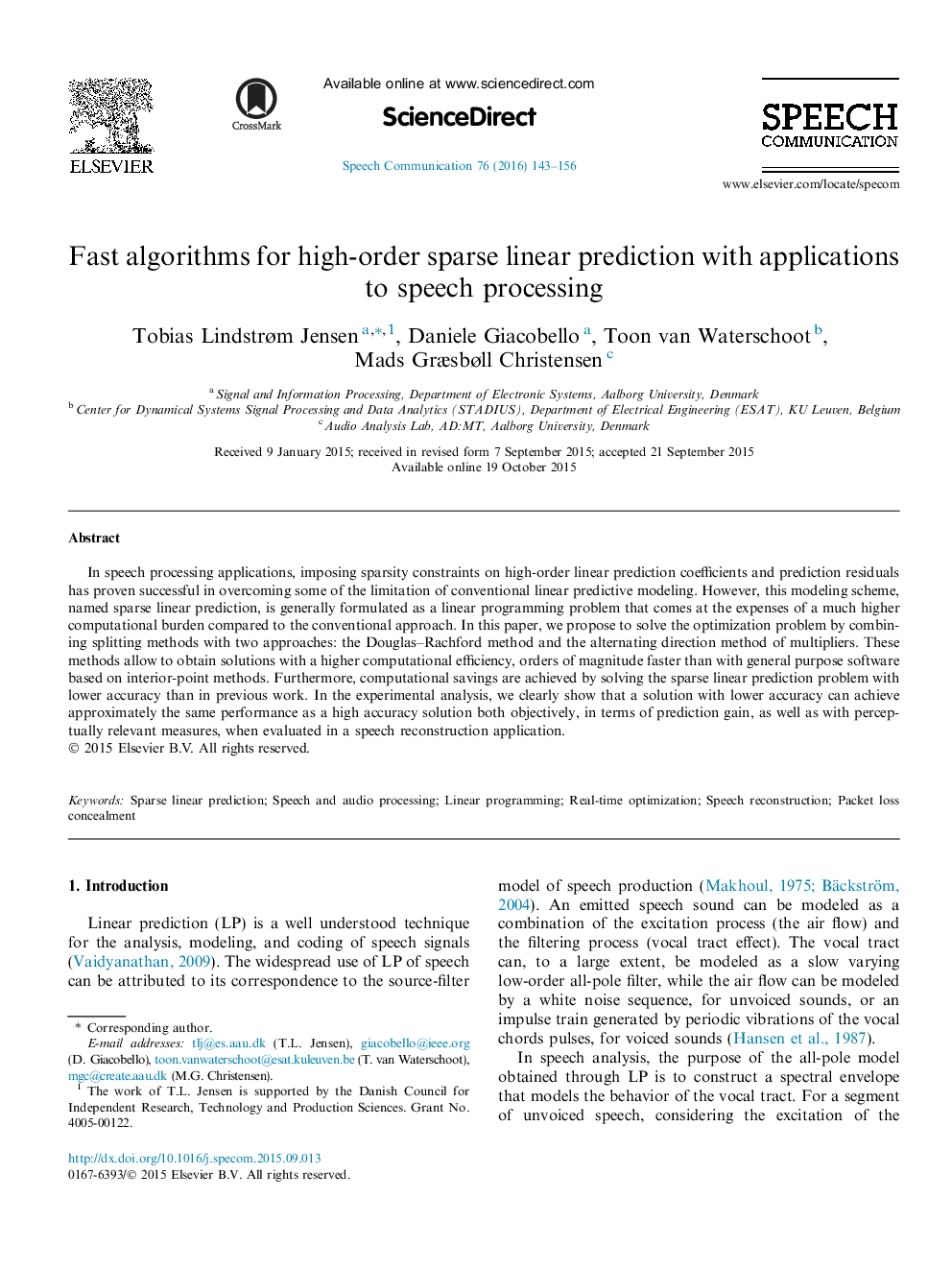| Article ID | Journal | Published Year | Pages | File Type |
|---|---|---|---|---|
| 566005 | Speech Communication | 2016 | 14 Pages |
•Propose fast algorithms for sparse linear prediction.•Usage of NlogNNlogN algorithms for repeated solve of symmetric Toeplitz systems.•Can handle even quite large dimensions and high-sampling rate.•The fast algorithms shows possibilities for implementation in real-time systems.•Experiments shows that high and low accuracy solutions performs almost equally well.
In speech processing applications, imposing sparsity constraints on high-order linear prediction coefficients and prediction residuals has proven successful in overcoming some of the limitation of conventional linear predictive modeling. However, this modeling scheme, named sparse linear prediction, is generally formulated as a linear programming problem that comes at the expenses of a much higher computational burden compared to the conventional approach. In this paper, we propose to solve the optimization problem by combining splitting methods with two approaches: the Douglas–Rachford method and the alternating direction method of multipliers. These methods allow to obtain solutions with a higher computational efficiency, orders of magnitude faster than with general purpose software based on interior-point methods. Furthermore, computational savings are achieved by solving the sparse linear prediction problem with lower accuracy than in previous work. In the experimental analysis, we clearly show that a solution with lower accuracy can achieve approximately the same performance as a high accuracy solution both objectively, in terms of prediction gain, as well as with perceptually relevant measures, when evaluated in a speech reconstruction application.
